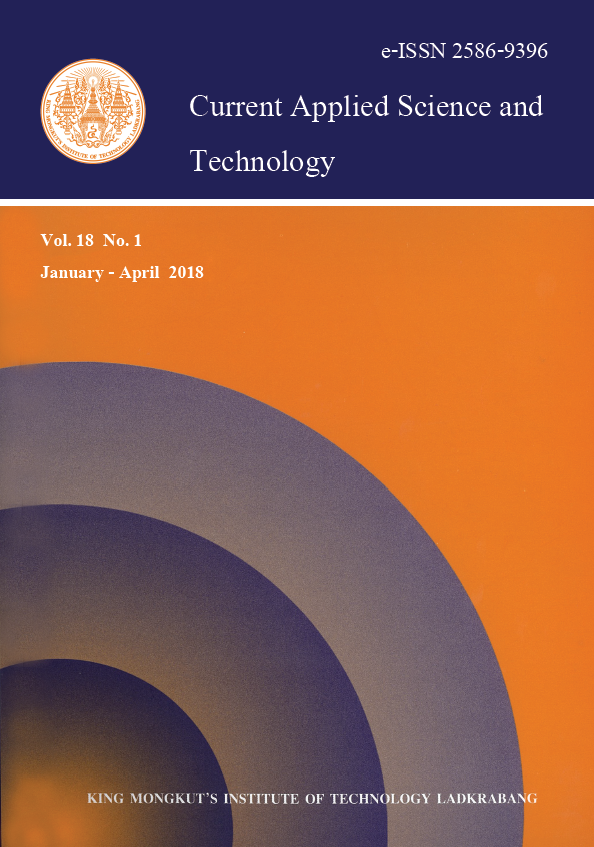Understanding Indonesian People: Consumer Acceptance and Emotions Study of Green Tea Products from Thailand
Main Article Content
Abstract
Evaluation of emotions as part of other sensory tests is gaining momentum in the sensory science and consumer. The EsSense ProfileÒ was developed for studying the impact of food on consumer’s emotions. Consumer will express their emotions when consuming products. The objective of this research was to measure emotion responses obtaining from Indonesian people by using EsSense Profile®. Fourteen samples of green tea produced from Chinese variety and Assam variety were used in this study. Check-all-that-apply (CATA) method was used to screen the emotion terms. Eight terms were selected from a total of 39 emotion terms as calm, good, good-nature, happy, peaceful, pleasant, tender and warm as key emotion terms that are related to Thai tea products. Consumers were rated their emotions on a 5-point intensity scale before and after drinking tea. It was found that intensity of emotional response of green tea (Assam variety) was sinificantly different (p < 0.05) when compare before and after drink whereas green tea (Chinese varitey) was not significantly different (p > 0.05). Indonesian people accepted green tea produced from Chinese variety (72.1 %) more than Assam variety (52.7 %). Result from logistic regression indicated that color and taste were influential attributes affecting overall acceptance for green tea (Chinese variety) whereas color, aroma, flavor and taste were influential attributes for Assam variety. Indonesian people considered color, flavor and taste as key attributes affecting purchase intent. This result will provide incremental information regarding consumer tests and overall acceptability data and also help connect marketing with product development efforts via consumer emotions and acceptability ratings.
Keywords: Consumer acceptance, Emotions, Green tea
*Corresponding author: Tel.: +6653-916- 752 Fax: +66-53-916-737
E-mail: piyaporn.chu@mfu.ac.th
Article Details
Copyright Transfer Statement
The copyright of this article is transferred to Current Applied Science and Technology journal with effect if and when the article is accepted for publication. The copyright transfer covers the exclusive right to reproduce and distribute the article, including reprints, translations, photographic reproductions, electronic form (offline, online) or any other reproductions of similar nature.
The author warrants that this contribution is original and that he/she has full power to make this grant. The author signs for and accepts responsibility for releasing this material on behalf of any and all co-authors.
Here is the link for download: Copyright transfer form.pdf
References
[2] Liang, J., Yan, H., Puligundla, H., Gao, X., Zhou, Y. and Wan, X., 2017. Application of chitosan nanoparticles to enhance absorption and bioavailability of tea polyphenols: A review. Food Hydrocolloids, 69, 286-292.
[3] Nibir, Y.M., Sumit, A.F., Akhand, A.A. and Ahsan, N., 2017. Comparative assessment of total polyphenols, antioxidant and autimicrobial activity of different tea varieties of Bangladesh. Asian Pacific Journal of Tropical Biomedicine, 7(4), 352-357.
[4] Resurreccion, A.V.A., 1997. Sensory evaluation method to measure quality of frozen food. In: Erickson MC, Hung Y-C, editors. Quality in Frozen Food. New York: Chapman & Hall p.357-76.
[5] Herrera-Corredor, J.A., Prinyawiwatkul, W., No, H.K., Chompreeda, P., Garcia, K., Saidu, J.E.P. and Khachatryen, A., 2010. Influence of education/professional of Mexican consumers on acceptance and purchase intent of corn tortilla. Journal Sensory Study, 25, 108-126.
[6] King, S.C. and Meiselman, H.L., 2008. Development of a method to measure consumer emotions associated with foods. In 3rd European conference on sensory and consumer research. A sense of quality, Hamburg, Germany.
[7] King, S.C. and Meiselman, H.L., 2010. Development of a method to measureconsumer emotions associated with foods. Food Quality and Preference, 21(2), 168-177.
[8] Thomson, D.M.H., Crocker, C. and Marketo, C.G., 2010. Linking sensory characteristics to emotions: An example using dark chocolate. Food Quality and Preference, 21(8), 938-947.


